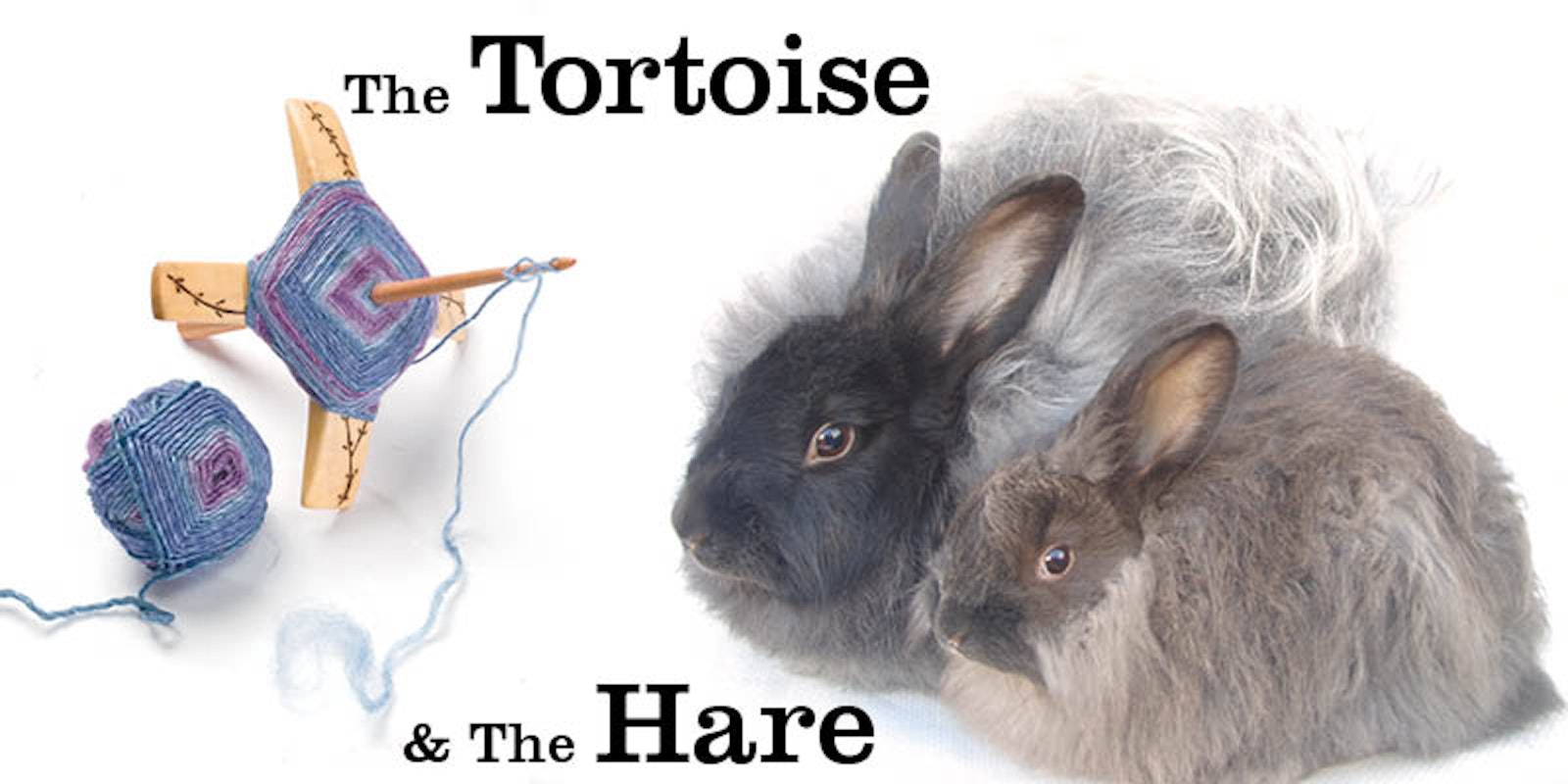Looking at my fiber stash, I sometimes feel a wave of panic rise. How will I ever transform all this fiber into handspun yarn? (Not to mention the next question: How much time will it take to knit, weave, or crochet all that handspun yarn?) If I have any hope of finishing our sock spin-along/knit-along I’d better get spinning.
Here’s how to spin faster:
 The loosened fiber on the right will draft out smooth as cream. Photo by Joe Coca.
The loosened fiber on the right will draft out smooth as cream. Photo by Joe Coca.
1. Predraft. Loosening up and generally preparing your fiber supply in advance makes the spinning go much faster, because you won’t have to interrupt your spinning to wrestle with compacted top. Attenuating the fiber supply down to the grist of the finished handspun yarn is a waste of time (and not a good way to get consistent yarn), but priming the fibers to slide past each other makes the spinning much quicker.
2. Ready your space. If you need to stop and tear off a new length of fiber, locate the orifice hook, or empty a bobbin, the interruption in your spinning time and start-up fiddling make you much less efficient. In her video Get More Spun, Abby Franquemont describes how (and why) to arrange everything you’ll need for a spinning session so you can work uninterrupted.
 An effortless long draw (demonstrated by Maggie Casey) is a speedy way to spin. Photo by George Boe.
An effortless long draw (demonstrated by Maggie Casey) is a speedy way to spin. Photo by George Boe.
3. Long draw. Paula Simmons Green made the persuasive case for the quickness of woolen drafting when she wrote Spinning for Softness and Speed in 1982. There are production spinners who make miles of yarn using short forward draw or double-drafting or some hybrid, but for me, nothing beats the quick rhythm of draw out, feed on that long draw provides. The fastest I’ve ever spun—a pindrafted fleece, during Spinzilla (despite the interventions of a new kitten)—was a rhythmic long draw.
Here’s why you shouldn’t spin faster:
1. It’s not a race. Unless you are a true production spinner being paid for your yarn, you’re doing this for fun, remember? Sure, settle into a rhythm and feel a sense of accomplishment when you finish your handspun yarn, but take some time to smell the roses. Or lanolin.
2. Protect your body. As Abby notes in Get More Spun, you’re actually more productive when you take planned breaks—especially because repetitive strain injuries can bring your spinning to a complete halt. Do some stretching and strengthening exercises. Ramp up slowly. When I was a long-distance runner in a previous life, I learned this rule of thumb: Don’t increase your mileage by more than 10% per week. It applies for spinning, too.
3. Quality over quantity. Without obsessing over every centimeter of yarn, spend your energy making handspun yarn you like and are proud of, not just yardage for yardage’s sake. (Sampling, by the way, is one of those tasks that seems slow and inefficient but saves time when it keeps you from committing to a bad idea.)
If you really want yarn faster, there are some excellent millspun yarns out there. If you want to make handspun yarn, take your time.
—Anne Merrow
Featured Image: Like the Tortoise and the Hare, you may spin more yarn you like by taking your time. Turkish spindle turtle photo by Joe Coca; Angora rabbit photo by Denise Williams.

